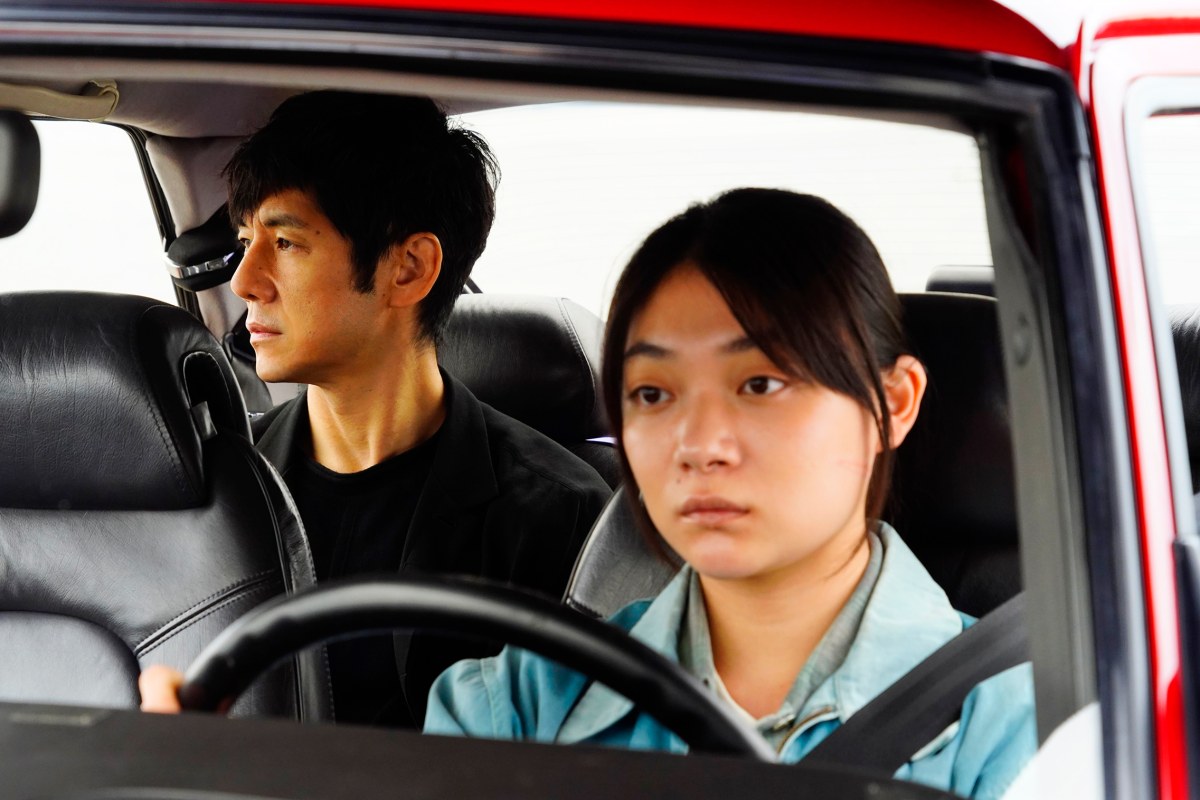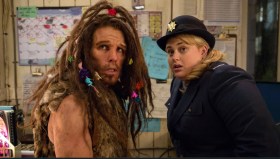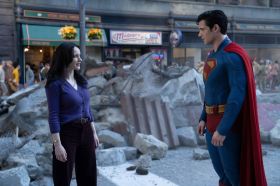In the 1970s, I enjoyed making audiocassettes from films I particularly loved, and then listening to them over and over – Alfred Hitchcock’s North by Northwest (1959) was among those I minutely studied in this way. I do not simply mean the disc of Bernard Herrmann’s marvellous orchestral music score; I am talking about the entire film from start to end, with voices, noises and everything else blended – the complete ‘sound design’, as we say today.
Do the young cinephiles of the 21st century still do this? Back then, plugging a tape recorder into a video player or TV set was a relatively simple procedure. Today, there’s something about the everyday configuration of laptop, streaming and Spotify that discourages such wholesale ‘sampling’. The effort it takes to create a mp3 audio file from a movie soundtrack and then get that into a listening device is just not as much fun as the old, DIY audiocassette culture.
Of one thing, however, I am certain: if I was still a 15-year-old kid making my cherished movie tapes, the Japanese film Drive My Car, directed by Ryusuke Hamaguchi, would go right to the top of my personalised playlist.
Again, it’s not just because of the pleasing musical score – relatively sparsely used across the three-hour running time – by Eiko Ishibashi. It’s because the whole film is structured as a soothing sonic bubble that wraps us in the gentle noises of traffic, water, wind, room atmospheres, and very calm, controlled speech patterns. Even, in a memorable scene, the sound of a vast garbage disposal factory is rendered as a sweet, lulling hum!
Over the past two-and-a-half decades, a bunch of films have investigated – in very different cultural situations and in starkly diverse ways – the possibilities offered by scenes staged in cars. David Cronenberg emphasises the icy alienation of car travel in Crash (1996) and Cosmopolis (2012). Leos Carax treats the custom cab as a space of incessant, near-magical character transformation in Holy Motors (2012). Abbas Kiarostami’s Ten (2002) and Claire Denis’ Friday Night (2002) focus on both the customary formality and unexpected intimacy that can be shared by a driver and a passenger. Drive My Car is quieter and less ostentatiously vituosic than any of those, but no film has ever been quite so alive to the delicious ambiguities and changing moods of automotive experience.
The nominal hero of Drive My Car, Kafuku (Hidetoshi Nishijima), happens to share my old-fashioned love of audiocassettes. He uses them not for movies but for plays: he records the complete text of whatever playscript he is set to act in and listens to it while driving, leaving spaces blank for him to recite his lines. What he – and we – get to hear a lot during the film is the Japanese translation of Anton Chekhov’s 1898 classic, Uncle Vanya. This is not merely incidental; like the Argentinian director Matías Piñeiro, Hamaguchi builds his story and characters upon the shifting, fleeting resonances between the world he films and the world embodied within a well-known literary work.
Read: Oscar nominations released – place your bets for 2022
Kafuku is a middle-aged guy who doesn’t like surprises, but is constantly encountering them. One nasty shock – his uncontrollable surge of emotion, one night, while playing the role of Vanya on stage – has convinced him to give up acting. Instead, he leads intensive performance workshops that culminate in public productions. One such workshop in Hiroshima takes Uncle Vanya as its subject. Even in this strictly regulated environment – Kafuku’s ‘method’ depends on his cast members simply sitting and reading the text repeatedly for weeks, without evident emotion – not everything will go exactly to plan.
First, Kafuku finds out that, while in Hiroshima, he is not allowed to pilot his own, beloved, red Saab that has served him faithfully for 15 years. He must yield to a hired driver, Misaki (Tōko Miura), who is in her early 20s. Misaki is a hypnotic figure: she’s a mystery (what’s that scar on her face?), she doesn’t give away much, and her physical bearing advertises an unmistakeably punk ‘go away and leave me alone’ attitude. Luckily, she transforms every ride – and there are many in Drive My Car – into a serene glide. Eventually, we will discover a great deal about Misaki – alongside the crucial fact that she is the same age that Kafuku’s daughter would be if she had lived beyond early childhood.
Second, Kafuku discovers, to his discomfort, that a young, aggressive, TV actor, Takatsuki (Masaki Ikada) – who happens to have been his wife’s final lover before her sudden, untimely death – is keen to participate in the workshop. With a mixture of curiosity and perversity that recalls the premise of the Dardenne brothers’ The Son (2002), Kafuku, knowing what Takatsuki doesn’t know that he knows, assents to the tricky situation. Takatsuki is an immature hothead, and sometimes a darn fool, but he, too, is allowed an extraordinary soliloquy – an almost miraculous flash of compassionate wisdom.
Read: Film Review: Death on the Nile lacks life
Although Drive My Car is not exactly what many people would describe as a highly dramatic film, a great deal happens in it, and its multiple threads are gradually interwoven with great skill by Hamaguchi. It is, in fact, an ingenious adaptation, by the director and Takamasa Oe, of three unconnected short stories by Haruki Murakami, all of which appeared in his 2014 collection Men Without Women. By drawing on this expanded field of Murakami’s fictional worlds, a long, linear narrative has been constructed for the original Kafuku in ‘Drive My Car’ – including, in early scenes, the intriguing trance-like, post-sex storytelling technique of his wife, Oto (Reika Kirishima), which is borrowed from the story ‘Scheherazade’. (The hard edges of Takatsuki’s character, likewise, are derived from the Murakami story ‘Kino’.)
Wisely, Hamaguchi – whose previous work, such as Asoka I & II (2018), has not impressed me half as much as Drive My Car – eschews the obvious temptation of an embedded flashback structure. He wants spectators, he declares, to have their own flashbacks, to discover the subtle rhymes and reversals between incidents or elements across the long haul – and, in this, he is the true heir to Taiwanese master Edward Yang (A Brighter Summer Day, 1991), who died at 59 in 2007. Hamaguchi’s film unfolds, indeed, like a leisurely, linear, smooth drive – everything about it corresponds to the ‘sonic bubble’ I noted above.
Ah, but there’s a catch – and it relates directly to this humble prop of the audiocassette. In perhaps the film’s only concession to overt symbolism, a striking superimposition places the spinning wheels of the Saab atop the turning spindles of the tape replaying – long after her death – the voice of Oto. Hamaguchi has said, somewhat mysteriously, that this is what Drive My Car is all about: rotation. I believe he means that, for all the forward motion on the road, for all the kilometres travelled, Kafuku is, effectively, running on the spot, not advancing. To achieve genuine progress into a future, he, like all the characters, will need to arrive at a successful equilibrium of memories, thoughts and emotions – and for that, as the film shows in its utterly beautiful, penultimate scene, Uncle Vanya serves well.
Did I mention that, in Kafuku’s stage productions, the actors speak different languages – including, here, Korean sign language? At the outset, this can seem an oddly avant-garde aspect of Drive My Car. By the end, I came to regard it as a mirror of how Hamaguchi works with his uniformly wonderful cast: by proceeding slowly and steadily, by dampening down the temptation of melodramatic escalation, by working through the filters of different cultures and languages, he (like Eugène Green) achieves a special kind of dramatic – and cinematic – truth.
Drive My Car offers an experience not to be missed.
DRIVE MY CAR
Dir. by Ryusuke Hamaguchi
2021, Japan
Rated MA15+
179 Mins
Australian distributor: Potential Films. Release date 10 Feb
Three contemporary Japanese film recommendations
Creepy (2016). Kiyoshi Kurosawa is the contemporary master of disquiet: whether in the mode of unnerving fantasy-horror or (as here) domestic, psychological thriller, he unerringly underlines those everyday details that suddenly become uncannily ‘creepy’.
Hana-bi (1997). Takeshi Kitano’s extraordinary career as performer and director has taken him from the lowest TV comedy to the highest art cinema – and he is unafraid to mix those extremes. This bleak tale of an ex-cop in a fatal spiral is, paradoxically, bursting with beauty.
Symbol (2009). Like Kitano, Hitoshi Matsumoto hails from TV comedy. His second effort as director (which I initially saw at Melbourne International Film Festival) resembles no other movie in its absolute and resolute weirdness: it alternates between two seemingly totally unconnected stories, one about Mexican wrestling, and other showing a man (Matsumoto) waking up alone in a white room. I will spoil nothing, other than to say that this is among the funniest films I’ve ever seen.
Actors:
Director:
Format:
Country:
Release:





